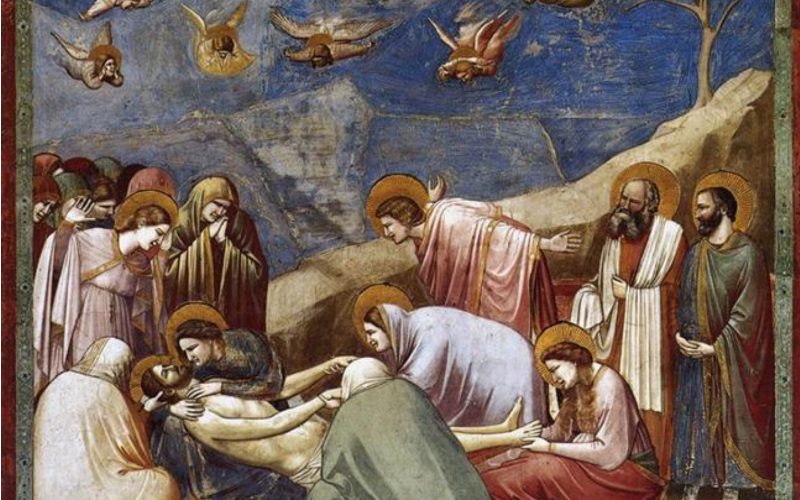Lamentation (The Mourning of Christ) is a fresco painted on the north interior wall of Padua’s Scrovegni Chapel in 1305 by the Italian artist Giotto as part of his cycle of the Life of Christ.
The Scrovegni Chapel was consecrated in 1305, as a private chapel next to the Eremitani Monastery by the well-to-do Scrovegni family. Between 1304 and 1306, Giotto painted a series of frescoes depicting scenes from the Bible, including the Life of Christ series, on the inside walls and ceiling of the chapel. The works are regarded as masterpieces. The monastery and chapel are now both part of the Musei Civici di Padova.
Giotto is regarded as a Proto-Renaissance painter, foreshadowing and paving the way for the early Florentine Renaissance painters by breaking the artistic mold of the Byzantine period by incorporating naturalism and depth into his work.
This fresco is a stunning example of Giotto’s departure from Byzantine practices. By combining elements of traditional Byzantine paintings, such as the dimensional layout and iconography, with his stylized faces expressing an emotional response to Christ’s death, he creates a deeply moving narrative.
The end result captivates the audience by inviting them to share in the lamentation’s suffering and agony. The cries of the women and the shrieks of the angels above are almost audible. He distinguished himself from other artists of his time by accurately portraying human emotion on faces, making Christ and his followers seem like real people who were experiencing real emotion.
Christ’s body is lowered from the cross and laid on the ground in the painting, surrounded by his bereaved family and friends. The Virgin Mary is holding his head, and Mary Magdelene is holding his feet. In despair, John the Apostle throws his arms wide behind them. To the right, Nicodemus and Joseph of Arimathea prepare the body for burial.


